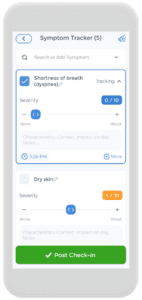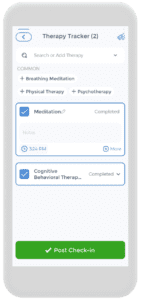
Asthma is a chronic respiratory condition that affects millions of people worldwide. It is a condition in which the airways become inflamed, resulting in difficulty breathing, chest tightness, and coughing. Asthma can be triggered by various factors such as pollution, dust, pet dander, and stress. Although asthma cannot be cured, it can be managed with proper treatment and self-care. One of the strategies for managing asthma is the use of asthma breathing exercises.[1][2]
Understanding Asthma and Its Triggers
What is Asthma?
Asthma is a respiratory condition that affects millions of people worldwide. It is a chronic condition that
While asthma cannot be cured, it can be managed with proper treatment and care. It is important to work with your healthcare provider to develop an asthma action plan that includes medication, breathing techniques, and avoidance of triggers.
Common Asthma Triggers
There are various triggers that can cause asthma symptoms. It is important to identify your triggers and take steps to avoid them. Some common triggers include:
- Pollen: Pollen from trees, grasses, and weeds can trigger asthma symptoms in some people. It is important to check the pollen count in your area and limit outdoor activities during high pollen days.
- Dust mites: Dust mites are tiny insects that live in household dust. They can trigger asthma symptoms in some people. To reduce exposure to dust mites, use allergen-proof covers on pillows and mattresses, wash bedding in hot water weekly, and vacuum carpets and upholstery regularly.
- Cigarette smoke: Cigarette smoke is a common asthma trigger. It is important to avoid smoking and exposure to secondhand smoke.
- Pet dander: Pet dander, which is made up of tiny flakes of skin, hair, or feathers, can trigger asthma symptoms in some people. If you have pets, it is important to keep them out of the bedroom and to vacuum and dust regularly.
- Mold: Mold is a type of fungus that can grow in damp areas of the home, such as bathrooms and basements. It can trigger asthma symptoms in some people. To reduce exposure to mold, fix any leaks or water damage promptly, use exhaust fans in bathrooms and kitchens, and clean moldy surfaces with a solution of bleach and water.
- Cold air: Cold air can trigger asthma symptoms in some people. It is important to cover your nose and mouth with a scarf when outside in cold weather.
- Exercise: Exercise-induced asthma is a type of asthma that is triggered by physical activity. It is important to warm up before exercising and to use a quick-relief inhaler before and after exercise, if prescribed by your healthcare provider.
- Stress and anxiety: Stress and anxiety can trigger asthma symptoms in some people. It is important to practice relaxation techniques, such as deep breathing patterns and meditation, to help manage stress and anxiety.
The Importance of Asthma Management
Asthma can be a challenging condition to manage, but with proper treatment and care, it can be controlled. Proper management of asthma can help prevent worsening symptoms, reduce the need for medication, and improve your quality of life. It is important to work with your healthcare provider to develop an asthma action plan that includes medication, breathing techniques, and avoidance of triggers.
Breathing techniques, such as diaphragmatic breathing and pursed-lip breathing, can help you feel more in control of your symptoms and reduce anxiety. These two breathing exercises can also help you breathe more efficiently, which can reduce the work of breathing and improve your overall lung function.
In addition to medication and breathing techniques, it is important to make lifestyle changes to manage your asthma. This may include avoiding triggers, maintaining a healthy weight, getting regular exercise, and quitting smoking, if applicable.
Remember, asthma is a chronic condition that requires ongoing management and care. By working with your doctor or asthma clinic and following your asthma action plan, you can live a healthy and active life with asthma.[3][4][5][6]
The Role of Breathing Techniques in Asthma Management
Asthma is a chronic respiratory condition that affects millions of people worldwide. It is characterized by inflammation and narrowing of the airways, which can cause wheezing, shortness of breath, and coughing. While medication is the primary treatment for asthma, breathing techniques can also play a significant role in managing symptoms and improving lung function.
Benefits of Proper Breathing Techniques
Proper breathing techniques can help you manage your asthma by reducing symptoms and improving lung function. They can help calm your nervous system, reduce inflammation in the airways, and improve oxygen flow to your lungs. By learning how to breathe correctly, you can reduce the strain on your respiratory muscles and make breathing easier. This can help you avoid asthma attacks and improve your quality of life.
In addition to their physical benefits, breathing techniques can also help you manage anxiety and stress, which are common triggers for asthma. By learning how to control your breathing, you can reduce feelings of panic and anxiety, which can exacerbate asthma symptoms. This can help you feel more in control of your condition and reduce the impact it has on your daily life.
How Breathing Techniques Complement Asthma Medication
Asthma medication works by opening the airways and reducing inflammation in the lungs. While medication is essential for controlling asthma, it is not always enough to manage symptoms on its own. Breathing techniques can be used in conjunction with asthma medication to provide additional relief.
By learning how to breathe correctly, you can reduce the strain on your respiratory muscles and make breathing easier. This can help you avoid over-reliance on your medication and reduce the impact of potential side effects. Additionally, breathing techniques can help you manage stress and anxiety, which can reduce the likelihood of asthma attacks and the need for medication.
Overall, breathing techniques are a valuable tool for managing asthma. By learning how to breathe correctly, you can reduce symptoms, improve lung function, and reduce your reliance on medication. If you have asthma, it is worth considering incorporating breathing techniques into your asthma management plan.[7][8][9][10]
Different Types of Breathing Techniques for Asthma
Asthma is a chronic respiratory condition that affects millions of people worldwide. It is characterized by inflammation and narrowing of the airways, which can lead to difficulty breathing, wheezing, and coughing. While there is no cure for asthma, there are various breathing techniques that can help manage the symptoms and improve overall lung function. In this article, we will explore some of the most effective breathing techniques for asthma.
Diaphragmatic Breathing
Diaphragmatic breathing is a technique that involves breathing deeply from your diaphragm. This technique helps you take in more air and exhale more fully, which can reduce the amount of stale air in your lungs. It can also help relax the muscles used for breathing, reducing the effort required to breathe. Diaphragmatic breathing is especially useful for people with asthma, as it can help reduce the frequency and severity of asthma attacks. To practice diaphragmatic breathing, lie down or sit comfortably and place one hand on your chest and the other on your belly. Take a deep breath in through your nose, filling your belly with air, and then exhale slowly through your mouth, pushing all the air out. Breathe slowly and breathe steadily.
It is recommended to practice diaphragmatic breathing for 5-10 minutes each day, gradually increasing the duration as you become more comfortable with the technique. Over time, diaphragmatic breathing can become a natural and automatic way of breathing, helping to reduce asthma symptoms and improve overall lung function.
Pursed-Lip Breathing
Pursed-lip breathing is another effective technique for managing asthma symptoms. This technique involves exhaling through pursed lips, creating a slight backpressure that helps keep airways open. This technique can help control the rate and depth of breathing, making it easier to breathe and reducing shortness of breath. Pursed-lip breathing can also help reduce the amount of air trapped in the lungs, which can improve overall lung function.
To practice pursed-lip breathing, sit comfortably with your back straight and your shoulders relaxed. Inhale through your nose for two seconds, then purse your lips as if you were going to whistle and exhale slowly for four seconds. Repeat this cycle for several minutes, gradually increasing the duration as you become more comfortable with the technique.
Buteyko Breathing Technique
The Buteyko breathing method is a technique that involves shallow breathing through a relaxed and open mouth. This technique helps improve the oxygenation of your body by increasing the level of carbon dioxide in the blood. It can also help reduce the amount of air you breathe, which can reduce the possibility of hyperventilation and improve overall lung function.
To practice the Buteyko breathing method, sit comfortably with your back straight and your shoulders relaxed. Take a small, shallow breath through your nose, then exhale slowly through your mouth. Hold your breath for a few seconds, then repeat the cycle for several minutes, gradually increasing the duration as you become more comfortable with the technique.
Papworth Method
The Papworth method is a technique that focuses on breathing slowly, deeply, and gently through the nose, using the diaphragm to control the breath. It also emphasizes the importance of relaxation and posture, as both can have an impact on your breathing. The Papworth method can help reduce anxiety and stress, which are common triggers for asthma symptoms.
To practice the Papworth method, sit comfortably with your back straight and your shoulders relaxed. Place one hand on your belly and the other on your chest. Inhale slowly through your nose, filling your belly with air, and then exhale slowly through your nose, emptying your belly of air. Repeat this cycle for several minutes, gradually increasing the duration as you become more comfortable with the technique.
In conclusion, breathing techniques can be a powerful tool for managing asthma symptoms and improving overall lung function. By incorporating these techniques into your daily routine, you can reduce the frequency and severity of asthma attacks, improve your breathing, and enhance your quality of life.[11][12][13][14]
How to Practice Breathing Techniques for Asthma
Finding a Comfortable Position

Additionally, it’s important to make sure that you’re wearing comfortable clothing that doesn’t constrict your breathing. Tight clothing can make it difficult to breathe deeply, which can make it harder to practice breathing techniques effectively.
Establishing a Routine
Like any new habit, it can be challenging to incorporate breathing techniques into your daily routine. To get the most benefit from breathing techniques, it is important to practice them consistently. You can start with just a few minutes per day and gradually increase the duration and frequency as you become more comfortable. It’s important to remember that even a few minutes of deep breathing can have a positive impact on your asthma symptoms.
One helpful way to establish a routine is to practice breathing techniques at the same time every day. For example, you might practice deep breathing exercises before bed or first thing in the morning. This can help you make breathing techniques a habit and ensure that you’re getting the most benefit from them.
Monitoring Your Progress
It’s important to monitor your progress as you incorporate breathing techniques into your asthma management plan. One way to do this is to keep a record of symptoms, medication usage, and breathing technique practice. This can help you track improvements and identify areas where you may need to make adjustments. Be sure to keep track of your breathing rate.
Another way to monitor your progress is to pay attention to how you feel after practicing breathing techniques. Do you feel more relaxed and less anxious? Are you breathing more easily? These are all signs that breathing techniques are helping to manage your asthma symptoms.
Finally, it’s important to remember that breathing techniques are just one part of an overall asthma management plan. If you’re experiencing severe symptoms or having trouble breathing, it’s important to seek medical attention right away. Your doctor can help you develop a comprehensive asthma management plan that includes medication, breathing techniques, and other strategies to help you breathe more easily.
Additional Tips for Asthma Management
Asthma is a chronic respiratory condition that affects millions of people worldwide. While there is no cure for asthma, it can be managed effectively with the right treatment and lifestyle changes. In addition to the tips mentioned in the previous section, here are some additional tips for managing asthma:
Identifying and Avoiding Triggers
Identifying and avoiding triggers can help reduce the frequency and severity of asthma symptoms. Common triggers include pollen, dust mites, pet dander, mold, and tobacco smoke. Keeping a diary of your symptoms and activities can help you identify which triggers affect you. Once you know your triggers, you can take steps to avoid them. For example, you can use allergen-proof covers on your bedding to reduce exposure to dust mites, or avoid going outside on high-pollen days.
Maintaining a Healthy Lifestyle
Maintaining a healthy lifestyle through regular exercise, a healthy diet, and adequate rest can also help manage asthma symptoms. Exercise can help strengthen your lungs and improve your breathing, while a balanced diet can help reduce inflammation in the airways. Getting enough sleep is also important for overall health and can help reduce stress, which can trigger asthma symptoms in some people.
In addition to these lifestyle changes, it’s important to take your medication as prescribed by your healthcare provider. This may include using a rescue inhaler during an asthma attack or taking long-term control medication to prevent symptoms from occurring in the first place.
Working with Your Healthcare Provider
Working with your healthcare provider is crucial for effective asthma management. Your healthcare provider can help you identify triggers, prescribe medication, and develop an asthma management plan. They can also monitor your progress and adjust your treatment plan as necessary. It’s important to keep your healthcare provider informed about any changes in your symptoms or lifestyle, as this can help them make informed decisions about your treatment.
Remember, managing asthma is a team effort between you and your healthcare provider. By taking an active role in your treatment and making healthy lifestyle choices, you can reduce the impact of asthma on your life and enjoy better overall health.
The CareClinic App Can Help
Asthma patients haveing an action plan is crucial, and the CareClinic app can help with that. You can use
The app also has a medication section where you can precisely track the doses you are taking, whether it be inhaled corticosteroids or alternative medicine, and receive reminders on when to take each medication. We know how difficult but important keeping track of your medications is, so we hope to make it as easy and streamlined as possible.
Breathing techniques are a powerful tool for managing asthma. They can help reduce symptoms, improve lung function, and reduce the impact of medication side effects. By incorporating breathing techniques into your asthma management plan and working closely with your healthcare provider, you can take control of your symptoms and lead a healthier life.
⬇️ Download the CareClinic App
Sources:
- American Academy of Allergy, Asthma & Immunology. Asthma. https://www.aaaai.org/conditions-treatments/asthma
- Asthma and Allergy Foundation of America. Asthma Flare-ups (Attacks): https://aafa.org/asthma/asthma-symptoms/
- Centers for Disease Control and Prevention. Asthma. https://www.cdc.gov/asthma/default.htm
- Global Initiative for Asthma. Global Strategy for Asthma Management and Prevention. https://ginasthma.org/gina-reports/
References
- “Breathing exercises for adults with asthma – PMC”. https://pmc.ncbi.nlm.nih.gov/articles/PMC7096190/
- “Breathing exercises for adults with asthma – Harper – 2022 – Clinical & Experimental Allergy – Wiley Online Library”. https://onlinelibrary.wiley.com/doi/full/10.1111/cea.14141
- “Asthma: Symptoms, Triggers, Prevention and Treatment – Medicine.com”. https://www.medicine.com/condition/asthma
- “How to control asthma | Pharmanewsonline”. https://pharmanewsonline.com/how-to-control-asthma/
- “CHNOLA | Asthma”. https://healthlibrary.chnola.org/library/Encyclopedia/85%2CP00816
- “MedicalResearch.com | How to Manage Asthma”. https://medicalresearch.com/how-to-manage-asthma/
- “The role of breathing techniques in the management of asthma: A systematic review – PubMed”. https://pubmed.ncbi.nlm.nih.gov/39028058/
- “How Alternative Medicine Can Help People With Asthma”. https://time.com/6156961/alternative-medicine-asthma/
- “Systematic review of the effectiveness of breathing retraining in asthma management – PubMed”. https://pubmed.ncbi.nlm.nih.gov/22082165/
- “The role of breathing training in asthma management – PubMed”. https://pubmed.ncbi.nlm.nih.gov/21150439/
- “Breathing Exercises for Asthma – Allergy & Asthma Network”. https://allergyasthmanetwork.org/news/breathing-exercises-for-asthma/
- “How to use breathing exercises to improve asthma | UCLA Health”. https://www.uclahealth.org/news/article/how-use-breathing-exercises-improve-asthma
- “Effect of two breathing exercises (Buteyko and pranayama) in asthma: a randomised controlled trial – PMC”. https://pmc.ncbi.nlm.nih.gov/articles/PMC1746772/
- “Papworth method”. https://en.wikipedia.org/wiki/Papworth_method
- “Asthma – Managing Asthma | NHLBI, NIH”. https://www.nhlbi.nih.gov/health/asthma/living-with
- “Many Asthma Patients Don't Follow Their Medication Plans. Here's How to Change That”. https://time.com/6237536/asthma-patients-improve-medication-plans/


